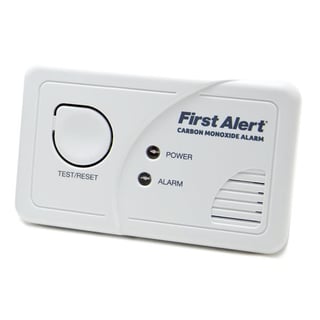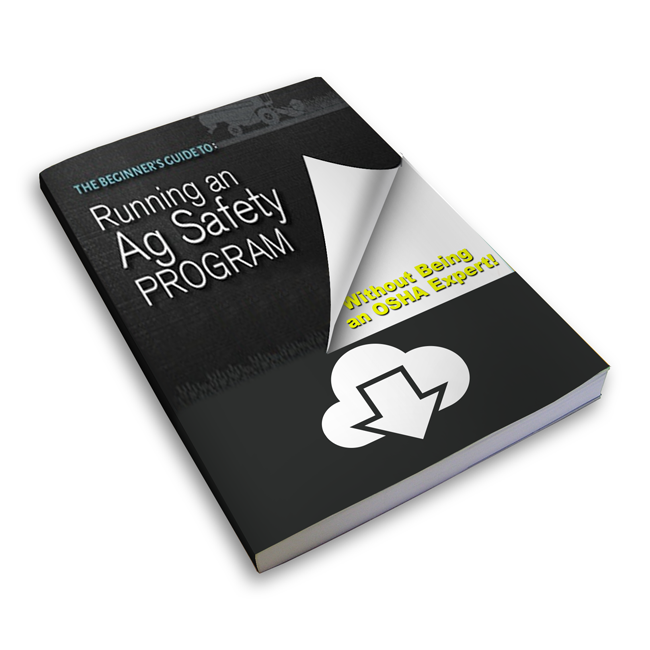This winter, are you prepared for the "silent killer"? When the cold weather comes and working indoors becomes more necessary, the risk of carbon monoxide poisoning increases. You may keep your equipment running indoors and think, "It's just for a little bit, I'll be okay." But even a little carbon monoxide exposure makes an impact on your body and health. Make sure you and your employees are up to date and trained on how to avoid and respond to this deadly gas.

What is Carbon Monoxide?
Carbon monoxide (CO) is a colorless, tasteless and odorless compound produced by incomplete combustion of carbon-containing materials. It is undetectable without a detection devise, which is why it's referred to as the previously mentioned "silent killer."
Carbon monoxide is a byproduct of burning carbon-containing fuels, such as propane, natural gas, wood or kerosene. Here are other sources that produce CO on a farm operation:
- Cars, trucks, tractors, ATVs, snowmobiles, motorcycles and other gas or diesel equipment
- Small engines like; lawnmowers, chainsaws, weed-eaters, generators
- Gas and oil furnaces, boilers and water heaters
- Gas, oil and kerosene space heaters
When you breathe in carbon monoxide, it replaces the oxygen in your blood. Your body is rendered incapable of taking in and absorbing oxygen, and without oxygen your cells die and you have organ failure.
Symptoms
Renee Anthony, director of the Great Plains Center for Agricultural Health says “The initial symptoms of carbon monoxide exposure will make you feel like you’re getting the flu. You’ll get a little tired, a little headache, maybe a little lightheaded. As it progresses, as the concentration maybe increases, and your level of carbon monoxide increases in your hemoglobin, then you can start really feeling dizzy. It may cause some feelings of nausea, and at some point, it may impair your ability to think straight." In low levels of CO poisoning, you wouldn't realize it could be the reason you're not feeling well. However, you might feel better when you leave the building and worse as you when you return. Or, other people you work with have the same symptoms as you. A CO detector will help remove all doubt.
Long-term Health 
At very high concentrations, carbon monoxide kills in less than five minutes. At low concentrations, carbon monoxide may take years to affect the body. The U.S. Occupational Health and Safety limit is 50 parts per million (ppm). Carbon monoxide detectors are required to sound an alarm when concentrations are greater than 100 ppm. The time of exposure, the concentration of CO, the activity level of the person breathing the CO, and the person’s age, sex, and general health all affect the danger level. For instance, a concentration of 800 ppm will cause headaches after one hour, but can lead to unconsciousness and death in 2 to 3 hours. Strong physical exertion, with an accompanying increase in the respiration rate, shortens the time to critical levels by 2 or 3 fold.
Winter Risks
Purdue Extension safety specialist Bill Field says:
“As winter temperatures fall, the risk of carbon monoxide poisoning may go up on farms if equipment and vehicles are run with improper ventilation.” The most common source of accidental carbon monoxide exposure on farms is running tractors or other vehicles in shops or garages with the doors closed, which keeps the carbon monoxide in the exhaust fumes from escaping, said Field.
Field goes on to say “Installing carbon monoxide monitors in enclosed work areas and checking them periodically is an important way to prevent or detect exposure before it reaches unsafe levels.”
More information on CO and agriculture here: North Carolina Department of Health and Human Services
First Aid
If a farmer experiences symptoms of carbon monoxide poisoning or if the carbon monoxide detector alarm sounds, he or she should immediately leave the building, get to fresh air and call 911, Field said. Do not drive yourself to the doctor.
A doctor will take a blood sample to determine the amount of CO in the blood. Once CO levels increase to 70 parts per million (ppm) and above, symptoms become more noticeable.
The best way to treat CO poisoning is to breathe in pure oxygen. This treatment increases oxygen levels in the blood and helps remove CO from the blood. Your doctor will place an oxygen mask over your nose and mouth and ask you to inhale. If you’re unable to breathe on your own, you’ll receive oxygen through a ventilator.
Conclusion
Breathing in carbon monoxide can be very damaging to your health, short and long term. Since carbon monoxide is virtually impossible to detect, installing a monitor with an audible alarm is the best way to stay safe. Maybe you've already done this in your home, but carry that safety over to your workplace. Train employees on the signs and symptoms of CO poisoning so they can respond accordingly and stay safe.
Good Day's Work - Hazard Communications Course
OSHA Fact Sheet Carbon Monoxide Poisoning



